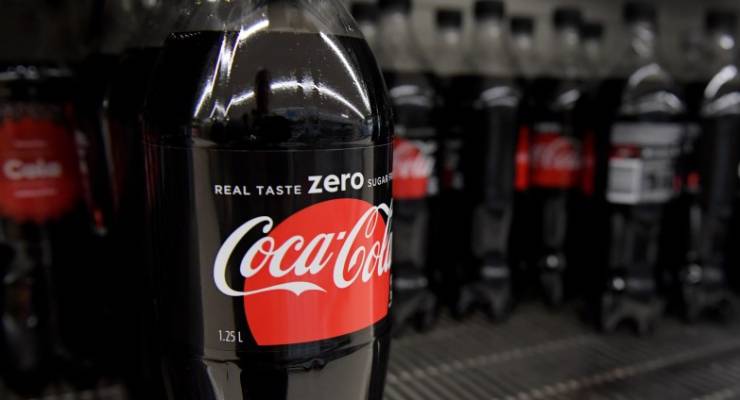
“Enjoy”. So goes one exhortation. “Taste the feeling” is another. It’s worked for generations, putting a red contoured bottle into the hands of millions. But the newly-released finances of the Australian owner of the Coca-Cola brand suggest all that enjoyment is fading.
Coca-Cola Amatil had revenue of under $5 billion last year, its lowest result in several years. The profits from the Australian beverages division, charged with selling Coke, fell from 2016 to 2017, and again in the first half of 2018. Coca-Cola Amatil’s profits do not mark the end of Coke — not even the beginning of the end. What they do seem to show, in Australia at least, is the end of the peak.
That a certain brand of a certain flavour of carbonated water rose to global dominance must surely be an aberration born of time and space. That combination of time and space is evidently receding, and variants such as Coke Vanilla, Coke Orange with No Sugar, Coke Raspberry are rising in prominence. This last one is apparently the most successful. Variants have long been part of their arsenal, but novelty appears to be doing more and more of the work in lifting cola to people’s lips. Such a turning point is worth taking a moment to acknowledge.
Finding an alternative
I don’t remember the last time I bought a Coke. I do remember the last time I bought a Coca-Cola Amatil product, however — it was a Powerade and it was very recently. Instead of slinging more of the same old bubbly brown water, Coke has got busy inventing new stuff. We’re guzzling greedily from a hydrant of kombucha, iced coffee and chemically enhanced energy drinks, plus water from diverse fictional springs. If we want a drink we want it to have some sort of property that helps us — be it electrolytes, caffeine or the microbial elements suspended in kombucha.
The opportunity to sell a lot of drinks remains. Australians are going out for meals and grabbing takeaway in record numbers. In the last decade, spending has risen around 70%, well in excess of retail spending overall. There are many hands reaching into drinks fridges. The question is whether they grab a product owned by Coke, and with the world’s most recognisable brand exercising less muscle, the answer has never been so uncertain.
One of the big winners for Coca-Cola Amatil has been coffee. There’s a lesson they seem to have learnt — if you’re going to sell a product, lace it with caffeine, and repeat business looks after itself.
Coca-Cola Amatil owns Grinders Coffee in Australia, and that is helping it. But to me the most interesting and surprising development is the switch to booze: Amatil has the rights to many booze brands in this country. They have Canadian Club, Jim Beam and Midori in spirits, but also flash brands like Laphroaig Whiskey. In beer, Coca-Cola Amatil has a range of US brands like Coors, Miller and Samuel Adams, plus many that take the appearance of local craft ales.
Sales of alcohol and coffee are regularly emphasised by CEO Alison Watkins as a bright spot, and sales are up 5% in the last six months, compared to the same period in the previous year.
What’s next?
It’s clear Coca-Cola Amatil will not be killed by a dip in the nation’s enthusiasm for classic Coke. It has engaged with the changes that bedevil it — the brand portfolio is likely broad enough to survive.
Whether the company has done enough to thrive is another question. Its stock price is currently $9.30 — a height it first reached in 2007. The source of growth from here will not be easy to find. But for Coca-Cola, the great brand of the 20th century, the 21st century could be very different. Most of us know enough about our bodies now to not want to guzzle Coke at every opportunity.
Coke acknowledges this and is making healthier varieties to keep us clutched to its bosom. But is a sugarless variant enough to keep the brand relevant? It all depends on whether we find something else to enjoy.








I dare say CC Amatil has anticipated class actions on sugar-based diseases and is moving its product footprint – and probably its cash reserves.
You wouldn’t know if any of the soft drink manufacturers are too worried about sugar-related actions or taxes. Like the tobacco industry of old, they’re blithely continuing with their toxic products, while doing very little to move to lower sugar content drinks. I blame the supermarkets equally in this. When you look down their aisles of soft drinks, there are few low sugar items. Of the low or no sugar drinks on offer, most have a nasty after-taste as they try to chemically mimic the sweet taste of the sugar laced products. One day, hopefully, they’ll cotton on to the fact that many customers are after a pleasant tasting, refreshing drink that doesn’t include the cloying sweet taste of sugar.
Virgin markets may include rural communities whose bore water has been poisoned by industry. Peru has found a novel use for coca cola, rinse for toothpaste, kind of defeats the purpose but all well, jobs and growth and all that.
In beer, they’ve actively acquired existing independent craft breweries, eg WA’s Feral Brewing. So its not just “the appearance of local craft ales”
it is a welcome sight to see private enterprise adapting to changing conditions – something the public servants and the welfare cargo cult cannot move from relying on Canberra – that small area of Australia which vacuums the money from the rest of the productive nation .
If only all that skill, logistics, promotions and marketing had been used in the Third World to supply clean drinking water instead on something intrinsically deleterious to the health of the consumers as well as environment – the company is notorious for depleting water tables in India for example.